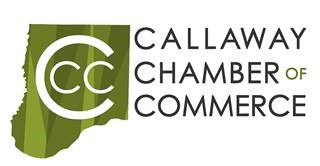Paper Trails and Profit Drains: The High Price of Staying Analog
There’s a certain nostalgia to paper. The scent of fresh prints, the weight of contracts in hand, the satisfaction of checking a task off with pen and ink. But for small businesses trying to do more with less, the romance of paper masks an expensive, tangled burden. Beneath the surface of invoices and filing cabinets lies a slow bleed of money, time, and momentum—one that rarely shows up on balance sheets, but still threatens long-term viability. While going digital might feel like a luxury or disruption, clinging to paper-based workflows comes with costs that are often invisible until they’ve already taken their toll.
The Time Siphon That Nobody Tracks
No one clocks the minutes it takes to walk across the office to find a file or reprint a lost receipt. But in a paper-based environment, time loss is chronic and cumulative. When documents are stored in drawers or folders—sometimes across locations—staff must stop what they’re doing to chase them down. These small interruptions ripple through the day, disrupting workflow and sapping focus. Multiply that by weeks and staff, and entire workdays vanish into clerical quicksand before anyone notices.
Costs That Compound With Every Printer Jam
The price of paper itself barely registers in a budget. But add in ink, toner, printer maintenance, shredders, physical storage, and the occasional courier—and suddenly “just printing it” becomes a line item with teeth. What’s more, these costs scale poorly. As business grows and transactions multiply, so does the physical load. There’s no graceful way for paper systems to scale without requiring more space, more hardware, and more people to manage them. What starts as a $30 ream eventually contributes to five-figure overhead.
Turning Print Into Power with OCR
Paper doesn't need to be a dead end—not when optical character recognition can breathe new life into old files. By using OCR to convert scanned documents into searchable, editable text, small businesses can eliminate the grind of manual entry and reclaim hours once lost to digging through cabinets. This automation doesn’t just reduce human error; it unlocks faster access to information across departments, smoothing out handoffs and supercharging productivity. For those curious about implementation, how OCR PDF works in practice reveals just how simple and transformative this shift can be.
Security in Name Only
There’s a false sense of security in locking a cabinet and calling it a day. In reality, paper documents are some of the most vulnerable assets a small business holds. Fires, floods, or even a spilled cup of coffee can erase years of data with no backup. Theft and unauthorized access are easier than most realize—especially when sensitive information is passed around or left out on desks. By contrast, digital workflows can offer encryption, permissions, and automatic backups that hard copy simply can’t match.
Paper Bottlenecks Are Culture Killers
Nothing kills momentum like waiting on a signature, approval, or printed form. Paper slows communication and creates bottlenecks that frustrate teams, especially in businesses where speed and responsiveness are key to staying competitive. Employees who constantly hit snags because of outdated systems often disengage—not because they don’t care, but because the tools don’t let them move. Over time, this can erode morale, increase turnover, and create tension between departments that should be collaborating, not colliding.
The Opportunity Cost of Refusing to Evolve
Every day spent clinging to paper is a day lost to potential. Automation tools, cloud-based platforms, and mobile integrations can free up hours, eliminate busywork, and open new channels for growth. Small businesses often feel they’re too busy to switch, but that busy-ness is often the direct result of not switching. The longer a company waits, the more entrenched the inefficiencies become—and the more expensive the fix. Choosing to evolve isn’t just about convenience; it’s about survival.
The case against paper isn't about nostalgia or even sustainability—though both play a part. It’s about control. When small businesses rely on outdated workflows, they give up control over their time, data, and security. And that’s a dangerous trade in a market where margins are tight and decisions move fast. Going digital isn’t a luxury move anymore—it’s the path toward resilience, agility, and smarter work. In the end, paper costs more than money; it costs momentum. And small businesses can’t afford to lose either.
Join the Callaway Chamber of Commerce today and unlock opportunities to grow your business while connecting with a vibrant community dedicated to success!
This Hot Deal is promoted by Callaway Chamber of Commerce & Visitor's Center.

